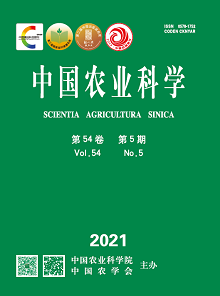【Objective】 Two interspecific hybrids PF (with honey peach aroma) and NF (without peach aroma) were obtained from the cross of Fragaria ananassa Duch. and F. nilgerrensis Schlecht. Fruit aroma compounds in PF and NF were compared to clarify the composition and content of honey peach aroma, aiming to provide a theoretical basis for research on strawberry aroma and utilization of wild strawberry resources. 【Method】 Matured fruits of PF and NF were harvested from greenhouse in February 18, 2018, respectively. The fruit traits comparison between two interspecific hybrids PF and NF were measured as Descriptors and Data Standard for Strawberry (Fragaria spp.). Fruit aroma compounds were extracted by using head solid-phase microextraction (HS-SPME), and then, detected by gas chromatograph tandem mass spectrometer technology (GC-MS). The mass spectra of the detected compounds were matched with NIST Library and also subjected to artificial qualitative analysis based on literatures. Multivariate statistics including principal component analysis (PCA) and supervised partial least squares-discriminant analysis (PLS-DA) were conducted to screen significantly differential metabolites. Variable Importance in the Projection (VIP) >1.0, log2FC >1.0 or log2FC<-1.0, and P value<0.05, indicates an increase and decrease by over 2-fold, respectively, in a comparison between PF and NF. The relative content of each significantly different metabolite (expressed as percentage) was calculated as the ratio between each peak area and the sum of all significantly different metabolite peak areas, multiplied by 100 [Relative Content. = (Areapeak/ΣAreaspeak) ×100]. Chemical Abstracts Service Registry Number (CAS#) was retrieved from the PubChem database (https://pubchem.ncbi.nlm.nih.gov). 【Result】 Fruits traits of PF was consistent with those of NF, except honey peach aroma. The fruits of both PF and NF were almost the same size, with red fruit color, small fruit cavity, soft texture and sweet and sour taste. Totally, 383 kinds of aroma compound were identified from the test samples by GC-MS, including 141esters, 41 alcohols, 40 ketones, 36 alkanes, 22 aldehydes, 17 olefins, 17 acids, 13 lactones, 10 naphthenes, 7 ethers, 6 furans and 16 other compounds. The main components were esters, kinds of which accounting for 36.81% of the total metabolites, followed by alcohol, ketone and alkane, accounted for 10.70%, 10.44% and 9.40%, respectively. A total of 67 significantly different metabolites were screened from the 383 detected metabolites, 58 of which were up-regulated and 9 were down-regulated. PF significantly up-regulated lactones. The top three up-regulated lactones were 2H-Pyran-2-one, tetrahydro-6-(2-pentenyl)-, (Z)-, 2H-Pyran-2-one, 6-hexyltetrahydro-, and 2H-Pyran-2-one, tetrahydro-6-pentyl-. NF down-regulated esters significantly. The top three down-regulated esters were 2-propenoic acid, 3-phenyl-, ethyl ester, sulfurous acid, 2-ethylhexyl isohexyl ester and butanoic acid, 3-hydroxy-, ethyl ester. The relative content of esters in PF (37.69%) was significantly lower than that of NF (57.20%), conversely, lactones in PF (20.91%) significantly higher than that of NF (6.12%). The relative content of ketones in PF (15.30%) was slightly higher than that of NF (9.12%). The relative content of alcohols, aldehydes, acids, olefins and other metabolites were almost equally present in PF and NF. The ester with the highest relative content in NF was butanoic acid, ethyl ester (17.92%), and the lactone with the highest relative content in PF was 2H-Pyran-2-one, tetrahydro-6-pentyl-(12.53%). The ketone with the highest relative content in PF was the same as NF, both were 2-heptanone. 【Conclusion】 Esters, such as 2-propenoic acid, 3-phenyl-, ethyl ester, butanoic acid, ethyl ester and butanoic acid, 3-hydroxy-, ethyl ester, might be the key aroma components of NF. Lactones, such as 2H-Pyran-2-one, tetrahydro-6-(2-pentenyl)-, (Z)-, 2H-Pyran-2-one, 6-hexyltetrahydro-, 2H-Pyran-2-one, and tetrahydro-6-pentyl-, might be the key aroma components to form the honey peach aroma in PF.









